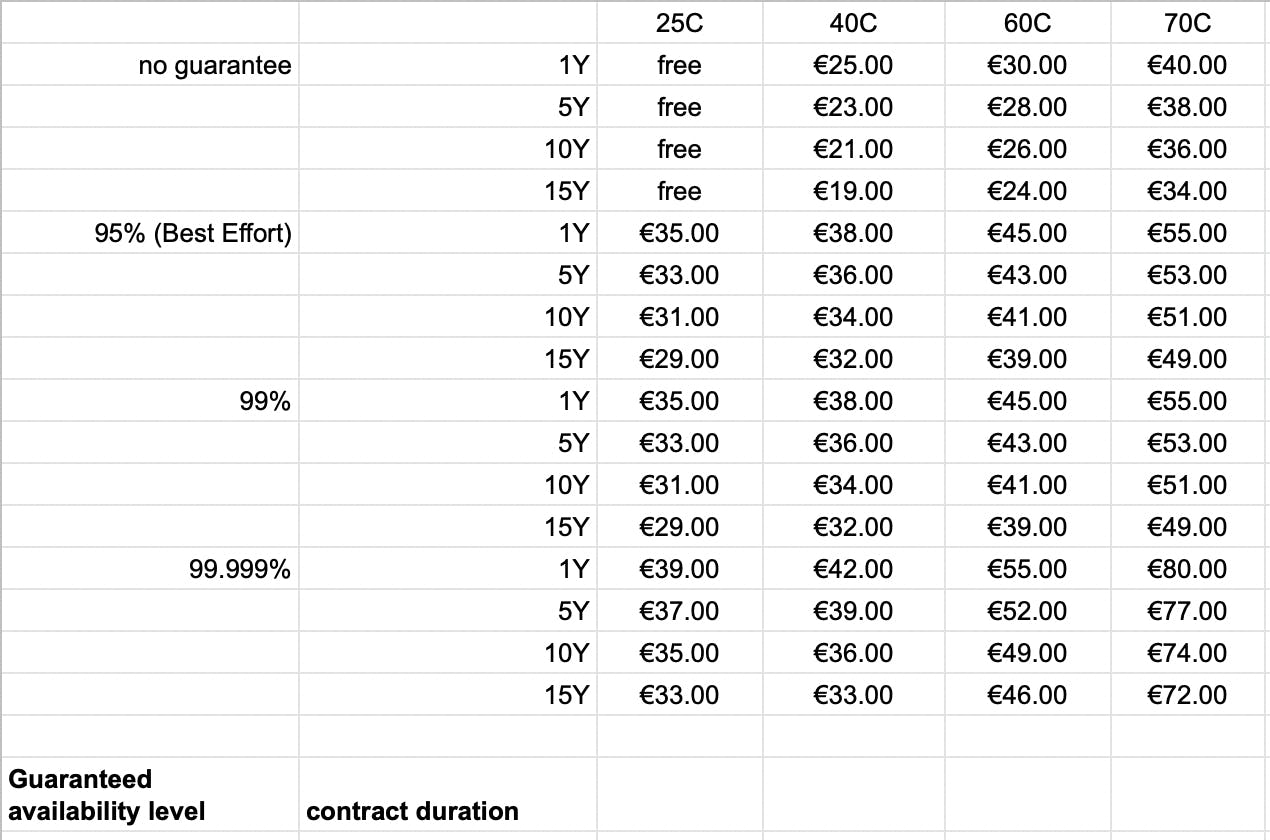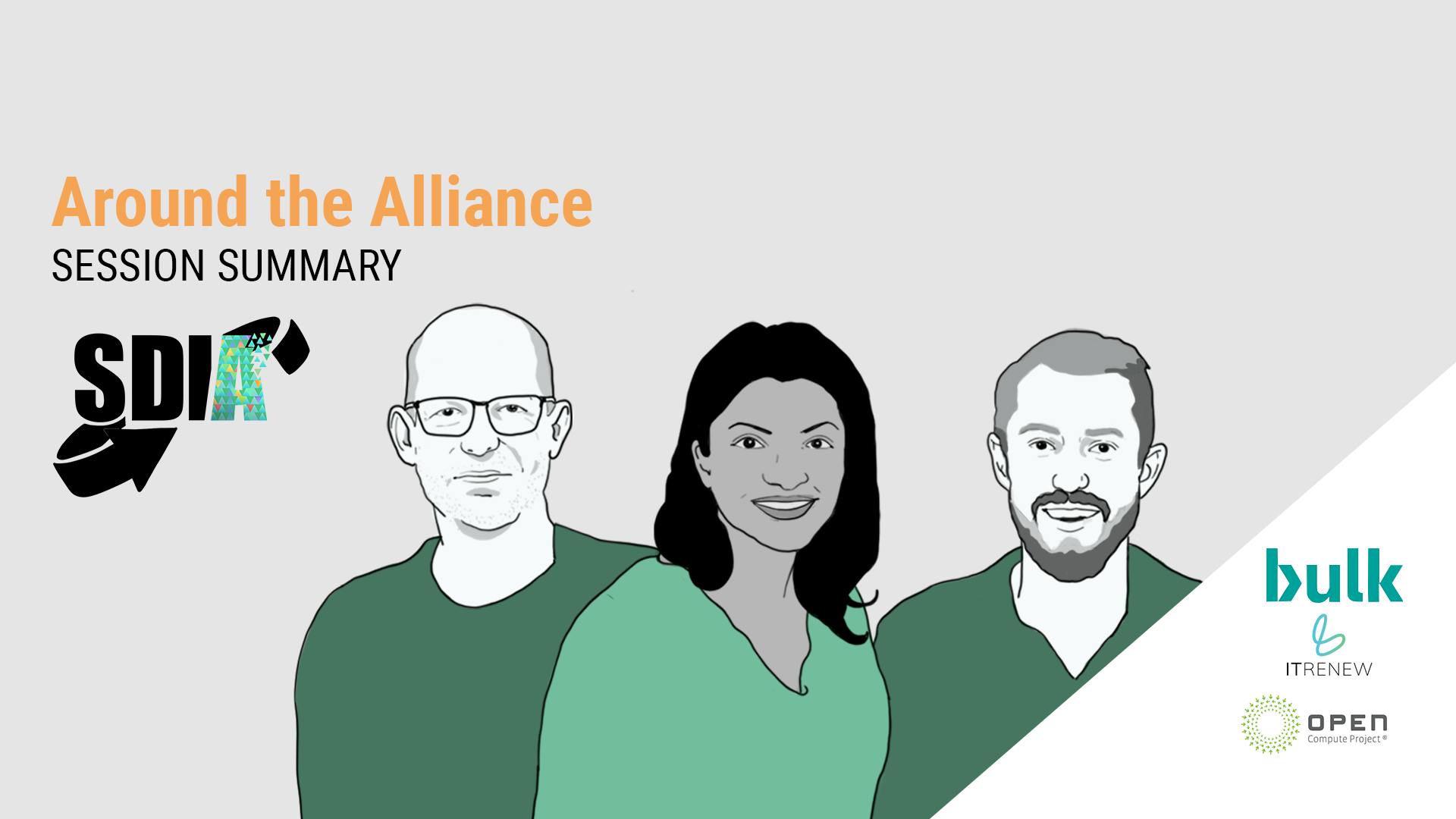This information needs to be available to each customer within the data center, so each customer can determine their own footprint ― including actual power consumption.
Transparency is the starting point. Every data center needs to make its environmental impact publicly visible and verifiable, providing its customers with transparent data on the environmental impact, including electricity consumption. And this needs to happen now.
We are betting a large part of our European future on digitalization, we must know the environmental consequences created by digitalization itself.
Any sustainability indicator must be available in conjunction with a mandatory scorecard
An indicator can enable customer choice, however, data centers are part of a complex supply chain therefore it is critical that such an indicator is accompanied by the public information required by other actors within the supply chain (e.g. software companies, IT service providers, hardware manufacturers) to decarbonize their part and quantify the environmental impact they have from utilizing the data center facility.
A sustainability scorecard (illustrated above) gives an overview of the environmental impact, energy usage, as well as efforts to reduce those impacts ― and can be based upon widely accepted lifecycle assessment metrics.
Include as much of Europe’s digital infrastructure as possible
We should make the scope of the Energy Efficiency Directive (EED) directive as wide as possible. Starting at 50 kW in installed electrical capacity for data center facilities. Otherwise, we will miss more than 40.000 server rooms (Borderstep, 2013) across Europe that present an opportunity to re-use heat and increase efficiency, as many of them are already within buildings where heat can be re-used easily.
Let’s make the scope wide: The costs of implementing heat re-use and energy efficiency measures always translate into savings for the data center owner; as electrical power is a major input commodity cost of a data center.
The SDIA is already running a large-scale Horizon 2020 project to develop a blueprint to transform even small-scale data centers into sustainable micro-clouds that can strengthen the digital backbone of Europe.
Heat re-use must be made mandatory
Data centers represent a significant heat generation source that is stable, reliable, and continuously available, albeit at mostly low temperatures.
It may not be the responsibility of the data center to find uses for the heat, e.g. by building a district heating network or greenhouses nearby, however, it is the responsibility of data center owners and operators to make it attractive and economical to buy the heat from the data center. and to enable integration as much as possible.
At the SDIA, we believe it starts with determining the costs of delivering and upgrading the heat at different reliability and temperature levels, as well as encompassing different contract durations (guaranteed availability). Each data center should determine the costs of delivering the heat within the required parameters, including investments in additional heat improvement or backup infrastructure. This will lead to a price per kWh of heat that can be used by others to determine a business case for building pipelines, district heating systems, or to relocate their business closer to the data center.
This is about enabling sector coupling in a cooperative and economical way, to ultimately use all the energy that is emitted from data center facilities. Today, this is not the case as data centers, district heating operators, and utilities all speak different languages, have different requirements, and for data centers, heat remains a non-core business.
The SDIA has already developed, in collaboration with a cross-section of industry actors, the parameters and template for such a cost table, an example is provided below.

.jpg?ixlib=gatsbyFP&auto=compress%2Cformat&fit=max&rect=0%2C44%2C600%2C800&w=600&h=800)
.png?ixlib=gatsbyFP&auto=compress%2Cformat&fit=max&w=1164&h=1268)

.png?ixlib=gatsbyFP&auto=compress%2Cformat&fit=max&w=1920&h=1080)

